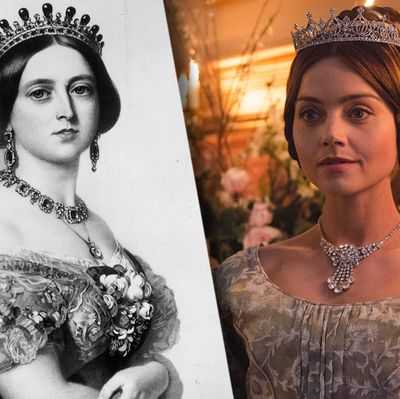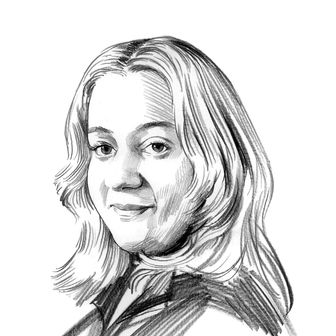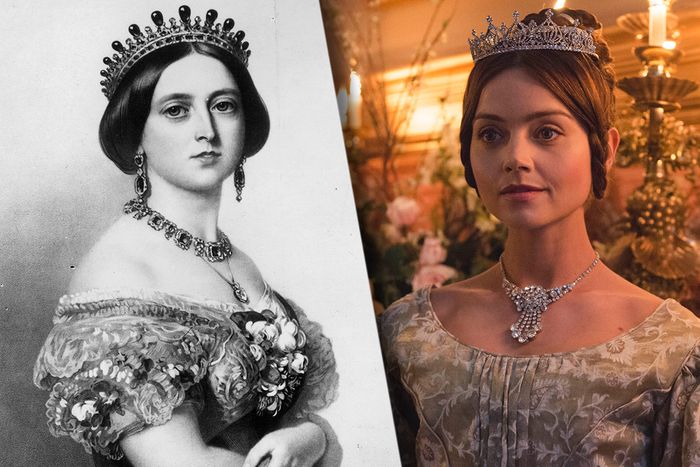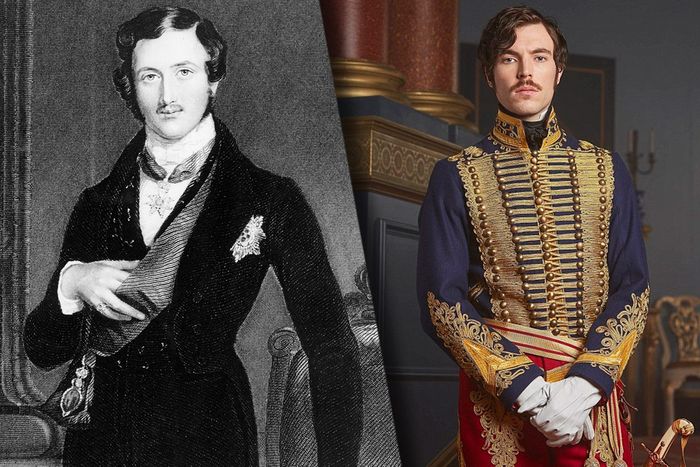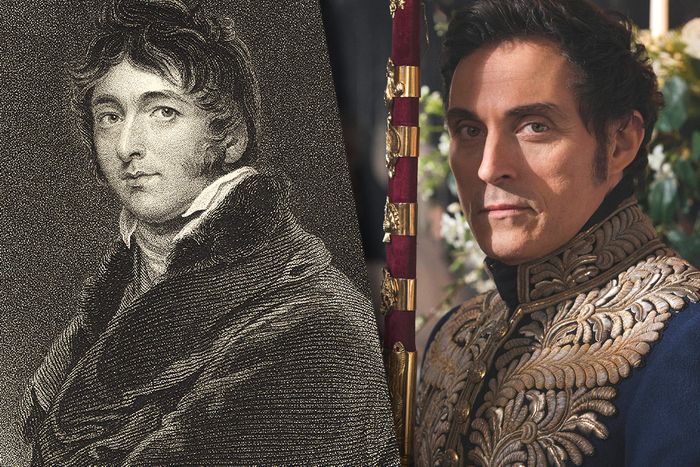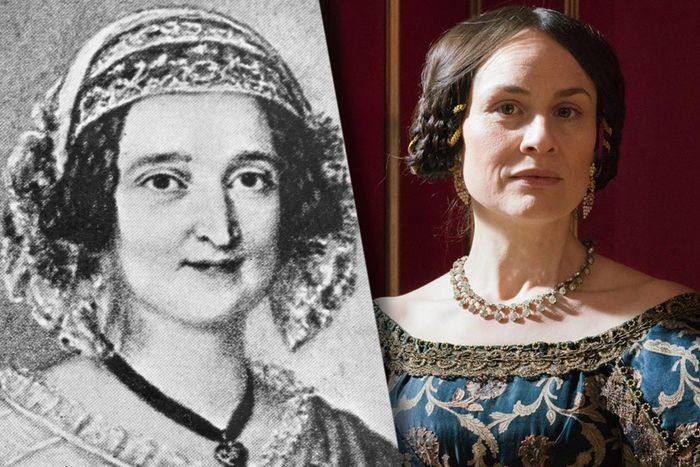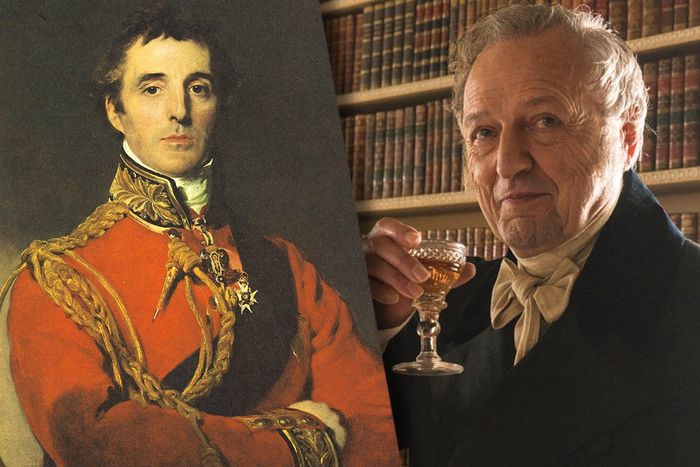With The Crown slowly and surely filming its second season and Downton Abbey settling into reruns, the demand for a gorgeously crafted, monarchical period drama has never been higher. Victoria, which premieres January 15 on PBS, is sure to fill that void, as the eight-part series chronicles Queen Victoria’s ascension to the throne at the ripe age of 18 through her first few years as British monarch. (A second season is already in the works, you lucky Anglophiles.) Ahead of the PBS premiere, Vulture has put together a helpful guide to all of the pertinent historical figures in the series. Their stories are a lot more dramatic than you might expect.
Queen Victoria began her reign in June 1837, when she succeeded her uncle, William IV. Her early years as queen were defined by her lavish coronation (despite her overall frugality), her marriage to Prince Albert, her growing involvement in politics and international relations, as well as several failed assassination attempts. She was the second longest-serving monarch in British history, clocking in at just over 63 years.
Albert, Prince Consort married his cousin, Queen Victoria, in 1840. Their union resulted in a fruitful and happy marriage that bore nine children. Though initially skeptical about his lack of significant royal duties and strict role as a consort — not dissimilar to the Duke of Edinburgh as recently depicted in The Crown — Albert became an important figure in various public causes, and relished his newfound duties as a multitalented reformer and innovator. Sadly, Albert died at the age of 42 in 1861.
A revered and aristocratic British Whig statesman, Lord Melbourne served as the home secretary and prime minister of England before mentoring Queen Victoria in her early years on the throne. In the four years of his mentorship, Melbourne aptly groomed Victoria in all things politics. Though there were rumors that he and Victoria had pursued a short-lived romance — he was granted his own apartment in Windsor Castle, which added fuel to the fire — there hasn’t been any reputable historical evidence to substantiate that claim.
Photo: Getty Images and PBS
The longtime comptroller and private secretary of Victoria’s mother, the Duchess of Kent, Sir Conroy and the duchess conspired to design an elaborate set of rules for Victoria to strictly follow in her childhood. The rules were known as the Kensington System, which was described as a way to keep the then-princess “weak and dependent” in the House of Hanover. When Victoria became queen, she permanently banished Conroy from her household, and it took her more than a decade to forgive her mother for utilizing the oppressive system. There were also widespread rumors that Conroy and the duchess were lovers.
Photo: Getty Images and PBS
The Duchess — also referred to as Princess Victoria of Saxe-Coburg-Saalfeld — birthed the future queen from her second marriage to Prince Edward, Duke of Kent and Strathearn. As previously mentioned, she and Conroy were instrumental in developing the cruel Kensington System that kept her daughter weak, although this backfired spectacularly with Victoria became queen. Upon the birth of Queen Victoria’s first child, she reconciled with her mother and the remainder of their relationship was relatively peaceful.
Photo: Getty Images and PBS
Louise Lehzen was a pivotal figure in young Victoria’s life, serving as protective governess throughout the girl’s adolescent years. She encouraged Victoria to fight against the strict Kensington System, and upon Victoria’s ascension, Lehzen was appointed as a trusted (albeit unofficial) advisor and companion to the queen. She left her position shortly after the birth of Victoria’s first child, as Prince Albert disliked her and demanded her removal from the household.
Photo: Getty Images and PBS
The Duke of Cumberland and Teviotdale — perhaps better known by his later title, Ernest Augustus, King of Hanover — was
a controversial figure often beset with scandal. An uncle of Queen Victoria who became overwhelmingly bitter when he didn’t inherit the throne, he chose to succeed to the German dominions of his family and become a king. At the time, it was rumored that he tried to execute numerous assassination attempts against Victoria to get the throne for himself, although, of course, the would-be assassins never succeeded.
Photo: Getty Images and PBS
Another uncle of Queen Victoria, King Leopold of Belguim helped arrange the marriage between Victoria and his nephew, Prince Albert. A skilled moderator, Leopold was a prominent figure in international politics throughout his life, which culminated in his ascension as first King of the Belgians. He reigned for over 30 years, until his death in 1865.
Photo: Getty Images and PBS
As a result of the 1840 Bedchamber Crisis in 1840, during which Lord Melbourne declared he would resign as prime minister, Queen Victoria asked Sir Robert Peel — a one-time PM and self-identified Tory — to lead a new government and again take the role. However, Peel refused when Victoria wouldn’t dismiss her numerous ladies-in-waiting, which consisted of wives and female relatives of well-known Whigs. Melbourne ended up staying on in the role, though Peel would ultimately serve a second term as prime minister a few years later.
Photo: Getty Images and PBS
Prince Ernest was both the cousin and brother-in-law of Queen Victoria, and was known for a particularly promiscuous lifestyle in his youthful years. He later became a sovereign duke of the Duchy of Saxe-Coburg and Gotha. Though he and Victoria had a generally tepid relationship due to political and familial differences, he and his brother Albert were very close throughout their lives. (Ernest would outlive him by about 30 years.)
Photo: Getty Images and PBS
Adored for his cooking, Francatelli served as the chief cook in Queen Victoria’s household from 1840 to 1842. He’s often regarded as the first culinary celebrity to grace England, wrote several popular Anglo-Italian cookbooks, and was one of the country’s most sought-ever chefs for decades.
Photo: Getty Images and PBS
The duke was a major confidant to Queen Victoria, whom she considered one her most trusted advisors during her early years. Upon his death in 1852, Victoria wrote a widely circulated comment about his contributions to England: “He was the greatest man this country ever produced, and the most devoted and loyal subject, and the staunchest supporter the Crown ever had.”
Photo: Getty Images and PBS
